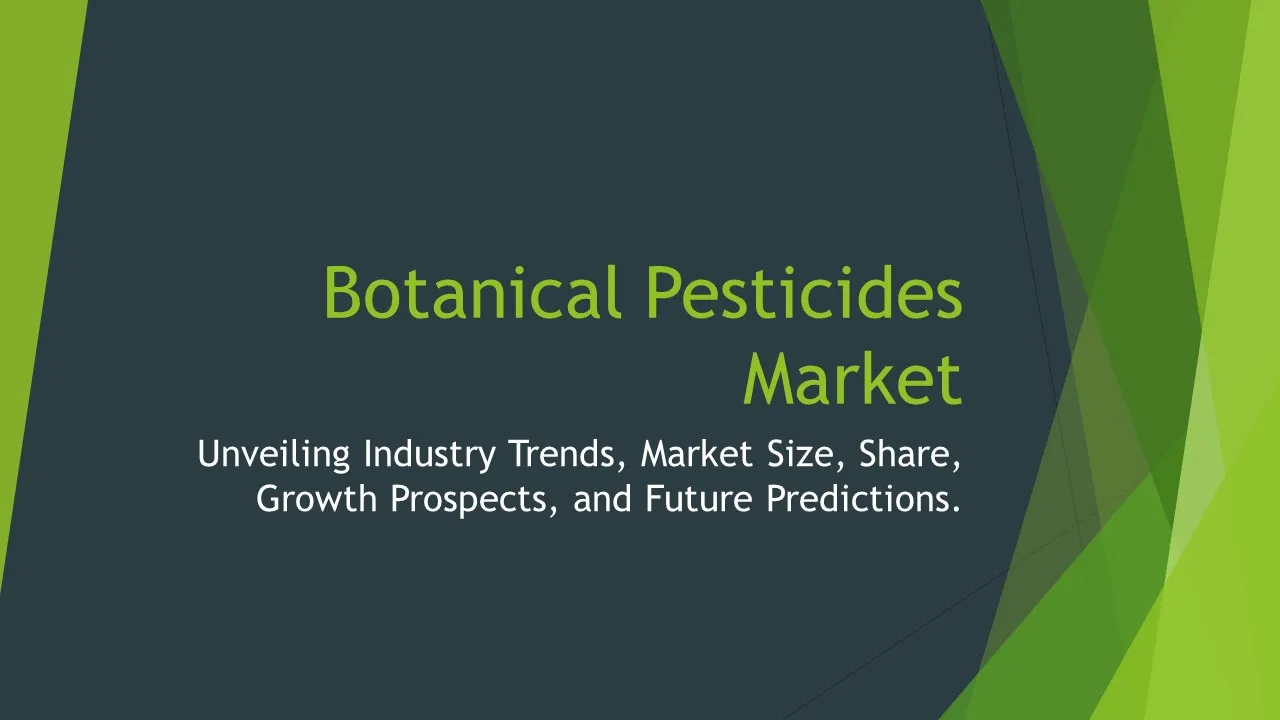Crop Protection Chemicals
Crop Protection Chemicals Market Segments - by Product Type (Herbicides, Insecticides, Fungicides, Rodenticides, and Others), Application (Grains & Cereals, Fruits & Vegetables, Oilseeds & Pulses, and Others), Distribution Channel (Online Stores, Agrochemical Retailers, Direct Sales, and Others), Ingredient Type (Organophosphates, Pyrethroids, Neonicotinoids, Biopesticides, and Others), and Region (North America, Europe, Asia Pacific, Latin America, and Middle East & Africa) - Global Industry Analysis, Growth, Share, Size, Trends, and Forecast 2025-2035
- Report Preview
- Table Of Content
- Segments
- Methodology
Crop Protection Chemicals Market Outlook
The global crop protection chemicals market is projected to reach approximately USD 90 billion by 2035, exhibiting a compound annual growth rate (CAGR) of about 5.5% during the forecast period of 2025-2035. The increasing global population and the consequent demand for food security are primary growth factors driving this market, as agricultural productivity needs to adapt to meet the rising consumption levels. Additionally, the growing adoption of precision farming techniques and integrated pest management strategies by farmers is enhancing the efficacy of crop protection chemicals. Furthermore, the trend towards organic farming is also steering innovations in biopesticides and eco-friendly solutions, which are becoming increasingly popular among consumers and farmers alike. The increasing prevalence of pests and diseases affecting crops is creating a need for effective crop protection solutions, thereby fueling market growth.
Growth Factor of the Market
The crop protection chemicals market is significantly influenced by the growing global population, which is expected to reach nearly 9.7 billion by 2050. This rapid demographic increase necessitates a corresponding surge in food production, thereby propelling the demand for efficient crop protection solutions. Furthermore, advancements in agricultural technologies, including the introduction of genetically modified crops, are enhancing the demand for specific chemicals tailored to protect these modified varieties. As climate change continues to impact agricultural productivity, the need for robust crop protection measures is becoming critical. Additionally, the increasing focus on sustainable agricultural practices is fostering innovation in the development of environmentally friendly chemicals, leading to a shift in market dynamics. The rise of urbanization and an increase in disposable incomes in developing countries are also contributing to the market's growth by increasing the demand for high-quality produce.
Key Highlights of the Market
- The global crop protection chemicals market is expected to witness a CAGR of 5.5% from 2025 to 2035.
- Herbicides hold the largest market share among product types, driven by the increasing prevalence of weeds in agricultural fields.
- North America is anticipated to dominate the market, attributed to advanced farming practices and high adoption of agrochemicals.
- Online sales channels are gaining traction due to the rising trend of e-commerce in the agrochemical industry.
- The biopesticides segment is projected to grow at the highest rate, reflecting the shift towards sustainable agricultural practices.
By Product Type
Herbicides:
Herbicides constitute a significant segment of the crop protection chemicals market due to their essential role in controlling unwanted grasses and weeds that compete with crops for nutrients, water, and sunlight. The demand for herbicides has been consistently rising as farmers seek to enhance crop yields and efficiency in their operations. This segment is further characterized by the dominance of selective herbicides, which target specific weed species without affecting the crop. Innovations in herbicide formulations, such as the introduction of herbicide-tolerant crops, are also propelling market growth. Furthermore, the increasing adoption of no-till farming practices is boosting the demand for residual herbicides that prevent weed growth over extended periods. As a result, herbicides are expected to maintain their leading position in the crop protection chemicals market in the years to come.
Insecticides:
Insecticides play a crucial role in safeguarding crops from various pests that can cause significant damage and yield loss. The increasing prevalence of pest resistance to conventional insecticides is driving the need for novel formulations and strategies to manage pest populations effectively. The segment of insecticides is diverse, encompassing a wide range of chemical classes such as organophosphates, pyrethroids, and neonicotinoids. Each class offers unique mechanisms of action tailored to combat specific insect threats. With advancements in research and development, newer insecticides are being formulated to be more effective while minimizing environmental impact. Furthermore, the rising awareness among farmers regarding integrated pest management (IPM) practices is encouraging the adoption of insecticides that work synergistically with biological control methods, thus supporting sustainable agriculture.
Fungicides:
The fungicides segment represents a vital portion of the crop protection chemicals market, as fungal diseases can lead to substantial losses in crop production. These chemical agents are instrumental in controlling a wide variety of fungal pathogens that can affect grains, fruits, and vegetables. The market for fungicides is primarily driven by the increasing occurrences of fungal infections exacerbated by changing climatic conditions. Different types of fungicides, such as systemic and contact fungicides, provide farmers with options to effectively manage their crops against fungal threats. The growing trend toward fungicide resistance is prompting researchers and manufacturers to focus on developing new active ingredients and combinations to ensure crop protection efficacy. This segment is also experiencing growth due to the increasing preference for high-value crops and ornamental plants that require precise fungicide applications.
Rodenticides:
Rodenticides, though a smaller segment compared to herbicides and insecticides, are essential for protecting agricultural produce from rodent infestations that can cause significant losses. These chemicals target rodents effectively and are increasingly being utilized in various agricultural settings. The growing awareness of the economic impact of rodent damage on crops is driving the demand for rodenticides. The segment includes different types of rodenticides, such as anticoagulants and non-anticoagulants, each with unique modes of action. Regulatory pressures and the need for environmentally friendly solutions are stimulating innovation in rodenticide formulations. Integrated pest management strategies that incorporate rodent control measures are also gaining traction, which is expected to contribute to the growth of this segment in the crop protection chemicals market.
Others:
The "Others" category within the product type segment includes various niche chemical agents that do not fall under the primary classifications of herbicides, insecticides, fungicides, or rodenticides. This segment encompasses a variety of products such as plant growth regulators, desiccants, and fumigants, each serving specialized purposes in agriculture. As farmers increasingly adopt integrated pest management (IPM) practices, these products are gaining traction for their ability to enhance crop health and improve yields. The market for this segment is driven by continuous research and development efforts aimed at creating innovative agricultural chemicals that address specific agricultural challenges. Additionally, the growing emphasis on sustainable agriculture is leading to the introduction of eco-friendly products within this category, thereby positioning the "Others" segment for steady growth in the coming years.
By Application
Grains & Cereals:
The grains and cereals application segment is the largest in the crop protection chemicals market, driven by the high demand for staple food crops such as wheat, rice, and corn. These crops are foundational to global food security, and protecting them from pests and diseases is crucial for ensuring adequate yields. The use of crop protection chemicals in this segment is essential for mitigating losses caused by various biotic and abiotic stresses. Herbicides play a significant role in this application, enabling farmers to manage weed competition effectively. Additionally, fungicides and insecticides are utilized extensively to protect grains and cereals from diseases and insect infestation, which can otherwise lead to severe reductions in quality and yield. The continuous advancements in agricultural practices and technology are expected to bolster the growth of this segment, particularly with the integration of precision agriculture techniques.
Fruits & Vegetables:
The fruits and vegetables application segment is witnessing substantial growth due to the rising consumer demand for fresh produce globally. Farmers are increasingly deploying crop protection chemicals to ensure the health, quality, and productivity of their fruit and vegetable crops. This segment requires a diverse range of chemical solutions, including fungicides for disease control and insecticides for pest management. Moreover, the growing trend toward organic produce is driving the demand for biopesticides and environmentally friendly products, leading to innovation within this segment. The high value associated with fruits and vegetables further incentivizes farmers to invest in effective crop protection solutions, thereby fostering market growth. Additionally, the increasing export of fruits and vegetables is amplifying the need for stringent pest and disease management practices, further stimulating this segment.
Oilseeds & Pulses:
The oilseeds and pulses application segment is becoming increasingly important, especially with the rising global consumption of plant-based proteins and oils. This segment includes crops such as soybeans, sunflowers, and chickpeas, which are essential for both food and industrial applications. Crop protection chemicals are vital in managing pests and diseases that threaten the yields of these high-value crops. The use of herbicides is particularly significant in oilseed farming, as weeds can severely impact the productivity of these crops. Additionally, with the growing focus on sustainable agricultural practices, there is a rising interest in biopesticides and other eco-friendly options within this segment. As consumer preferences continue to shift toward healthier and more sustainable food sources, the oilseeds and pulses segment is poised for growth in the crop protection chemicals market.
Others:
The "Others" application segment encompasses a variety of crops that do not fall under the primary categories of grains, fruits, vegetables, or oilseeds. This category can include specialty crops, ornamental plants, and other agricultural products that require specific pest and disease management strategies. The demand for crop protection chemicals in this segment is driven by the increasing cultivation of diverse crops and the need for effective preservation methods. Farmers in this segment often utilize tailored crop protection solutions to address unique challenges associated with specialty crops, such as pest pressures or disease susceptibility. Additionally, the trend toward sustainable agriculture is encouraging the adoption of eco-friendly crop protection solutions within this application, positioning the "Others" segment for gradual growth in the market.
By Distribution Channel
Online Stores:
The online stores distribution channel has emerged as a significant avenue for the sale of crop protection chemicals, driven by the increasing trend of e-commerce in the agricultural sector. The convenience associated with online shopping allows farmers to access a wider range of products without geographical constraints. Online platforms offer the benefit of competitive pricing, product comparisons, and direct access to product information, making it easier for farmers to make informed purchasing decisions. Furthermore, the growing number of digital tools and resources for farmers enhances the online shopping experience, enabling them to find tailored solutions for their specific agricultural needs. As the agricultural sector continues to embrace digital transformation, the online stores segment is predicted to grow substantially in the coming years, facilitating greater accessibility to crop protection chemicals.
Agrochemical Retailers:
Agrochemical retailers have long been a dominant distribution channel for crop protection chemicals, serving as the traditional point of sale for farmers. These retailers provide farmers with personalized services, expert advice, and product recommendations tailored to local agricultural conditions. The strong relationships built between farmers and retailers often translate into customer loyalty, making this channel vital for market penetration. Agrochemical retailers also facilitate the distribution of specialized products that may not be available through online platforms. With the growing emphasis on localized agricultural practices, retailers are adapting their inventory to cater to specific regional needs, which is expected to support the continued relevance of this distribution channel in the crop protection chemicals market.
Direct Sales:
Direct sales represent an essential distribution channel, allowing manufacturers to sell their crop protection chemicals directly to farmers. This channel enables companies to establish strong connections with farmers, providing them with tailored solutions and immediate access to product information. Direct sales often include personalized consultations and support services, which can enhance customer satisfaction and loyalty. The trend towards direct sales is also bolstered by the increasing emphasis on precision agriculture, where manufacturers collaborate closely with farmers to optimize the use of their products. As the agricultural sector evolves and seeks more efficient and effective solutions, the direct sales channel is expected to grow, aligning closely with farmers' needs and preferences.
Others:
The "Others" category within the distribution channel segment encompasses various alternative sales channels that do not fall under the primary classifications. This may include partnerships with agricultural cooperatives, government procurement programs, and other specialized distributors. These alternative channels cater to specific market needs, such as bulk sales or tailored solutions for specific crops or regions. The growth of this segment is influenced by the increasing need for localized distribution strategies and the diversification of agricultural practices. As farmers continue to seek innovative solutions to optimize their yields, alternative distribution channels are expected to play a crucial role in enhancing market accessibility and product availability, thereby contributing to the overall growth of the crop protection chemicals market.
By Ingredient Type
Organophosphates:
Organophosphates are a prominent class of chemicals used in the production of crop protection products, particularly insecticides and herbicides. Their mode of action involves the inhibition of acetylcholinesterase, a critical enzyme for nerve function in pests. This makes organophosphates highly effective for controlling a wide spectrum of pests and is one of the most extensively used classes in agriculture. The segment is driven by the demand for effective and fast-acting solutions for pest control. However, concerns regarding environmental impact and toxicity to non-target species are leading to increased regulatory scrutiny and a shift towards more sustainable alternatives. Despite these challenges, organophosphates continue to hold a significant market share due to their proven efficacy and broad spectrum of activity.
Pyrethroids:
Pyrethroids have gained popularity as synthetic alternatives to naturally occurring pyrethrins, which are derived from chrysanthemum flowers. Known for their effectiveness against a wide range of insect pests, pyrethroids are commonly used in agricultural settings. Their rapid action and low toxicity to humans and animals make them a preferred choice among farmers. The pyrethroid market is experiencing growth due to its application in both conventional and organic farming practices, driven by the increasing need for sustainable pest management solutions. Additionally, the development of new formulations that enhance the stability and efficacy of pyrethroids is expected to contribute positively to their market share in the crop protection chemicals sector.
Neonicotinoids:
Neonicotinoids are another essential class of insecticides that have garnered significant attention in the crop protection chemicals market. These chemicals act on the nervous system of insects, providing effective control against a variety of pests. Due to their systemic properties, neonicotinoids are absorbed by plants, providing protection throughout the growth cycle. The segment has experienced substantial growth fueled by the increasing prevalence of pest resistance and the need for effective pest management solutions. However, the usage of neonicotinoids has raised concerns regarding their environmental impact, particularly on pollinators like bees. As a result, regulatory measures are influencing their market dynamics, leading manufacturers to seek innovative alternatives that align with sustainable agricultural practices.
Biopesticides:
Biopesticides represent a growing segment in the crop protection chemicals market, aligning with the increasing demand for sustainable and eco-friendly agricultural solutions. Derived from natural materials such as plants, bacteria, and minerals, biopesticides offer effective pest management with minimal environmental impact. The market for biopesticides is driven by the rising consumer preference for organic produce, as well as the regulatory pressures to reduce chemical pesticide usage. Additionally, advancements in biotechnology are paving the way for the development of novel biopesticide formulations that enhance efficacy and shelf life. As farmers adopt integrated pest management practices that prioritize sustainability, biopesticides are expected to gain a more substantial share of the crop protection chemicals market.
Others:
The "Others" ingredient type segment encompasses a variety of chemical agents that do not fit neatly into the primary categories of organophosphates, pyrethroids, neonicotinoids, or biopesticides. This category can include a range of naturally derived and synthetic ingredients that serve specific functions in crop protection. The market for this segment is driven by innovation and the need for specialized products that address unique agricultural challenges. Moreover, as farmers increasingly seek customized solutions to enhance their crop yields, this segment is expected to grow. The demand for eco-friendly and alternative solutions is also influencing the development of novel ingredients in this category, thus presenting opportunities for market expansion.
By Region
The regional analysis of the crop protection chemicals market reveals distinct variations in market dynamics and growth trends. North America currently holds the largest market share, driven by advanced agricultural practices, significant investment in research and development, and high adoption rates of agrochemicals. The United States, in particular, is a leader in crop protection technology, supported by favorable regulatory environments and a strong agricultural infrastructure. The North American market is anticipated to grow at a CAGR of 5% during the forecast period, bolstered by increasing demand for high-quality produce and the adoption of precision agriculture techniques. In Europe, the market is also experiencing steady growth, influenced by stringent regulations governing chemical usage and a shift towards sustainable agricultural practices.
In the Asia Pacific region, the crop protection chemicals market is projected to expand rapidly, with a CAGR of approximately 7% during the forecast period. This growth is attributed to the increasing population, rising food demand, and the need for enhanced agricultural productivity in countries like China and India. The adoption of modern farming techniques and the introduction of genetically modified crops are further driving market expansion in this region. Latin America and the Middle East & Africa present significant opportunities as well, with growing agricultural investments and increasing awareness of crop protection solutions contributing to market growth. As a whole, the regional dynamics of the crop protection chemicals market are expected to evolve, reflecting the diverse agricultural landscapes and regulatory environments across the globe.
Opportunities
The crop protection chemicals market presents numerous opportunities for growth, driven primarily by the increasing focus on sustainable agricultural practices. As consumers become more health-conscious and demand for organic and pesticide-free produce rises, there is a growing market for biopesticides and eco-friendly crop protection solutions. Companies that invest in research and development to create innovative, sustainable products are well-positioned to capitalize on this trend. Moreover, the integration of precision agriculture technologies, such as drones and IoT devices, offers valuable insights for pest management and crop protection, enhancing the efficiency and effectiveness of traditional chemical applications. As farmers increasingly adopt data-driven approaches to agriculture, the demand for specialized crop protection solutions tailored to specific needs will continue to rise.
Furthermore, the expanding global population necessitates increased agricultural output, which further underscores the need for effective crop protection chemicals. Governments and agricultural organizations are increasingly recognizing the importance of crop protection in achieving food security, resulting in favorable regulatory policies and incentives for farmers. Investment in agricultural research and development is also on the rise, supporting innovation in crop protection technologies. Additionally, emerging markets in Asia Pacific, Africa, and Latin America present significant opportunities for growth as these regions strive to enhance their agricultural productivity and address pest-related challenges. The collaboration between agrochemical companies and agricultural stakeholders to develop customized solutions will provide a competitive advantage in this evolving market landscape.
Threats
The crop protection chemicals market faces several threats that could impact its growth trajectory. One of the primary concerns is the increasing regulatory scrutiny on chemical usage, particularly in developed regions like Europe and North America. Stricter environmental regulations and mounting public pressure to adopt sustainable agricultural practices are leading to the phased-out usage of certain chemicals. This trend may hinder the growth of traditional crop protection solutions and necessitate significant investments in research and development for alternative products. Additionally, the growing awareness of environmental issues and the potential health risks associated with chemical pesticides may result in changing consumer preferences, further impacting market demand.
Another significant threat is the rising prevalence of pest resistance to conventional crop protection chemicals. As pests adapt to existing chemicals, their populations become harder to control, resulting in increased crop losses and reduced effectiveness of traditional solutions. This resistance poses a substantial challenge for farmers, who need to implement integrated pest management strategies that incorporate a diverse range of control measures. Moreover, the economic implications of pest resistance could lead to higher costs for farmers, further complicating the already challenging landscape of agricultural production. The volatility of raw material prices and supply chain disruptions caused by geopolitical tensions or climate change also pose risks to the stability of the crop protection chemicals market.
Competitor Outlook
- BASF SE
- Corteva Agriscience
- Syngenta AG
- FMC Corporation
- Dow AgroSciences
- ADAMA Agricultural Solutions Ltd.
- UPL Limited
- Nufarm Limited
- Monsanto Company (now part of Bayer AG)
- Bayer AG
- Sumitomo Chemical Company
- Jain Irrigation Systems
- Cheminova A/S
- Marubeni Corporation
- Haifa Group
The competitive landscape of the crop protection chemicals market is characterized by a mix of established multinational corporations and emerging players. Key players such as BASF, Corteva, and Syngenta dominate the market, leveraging their extensive research and development capabilities to innovate and expand their product portfolios. These companies invest heavily in sustainable agricultural solutions, focusing on biopesticides and environmentally friendly products that cater to the growing demand for sustainable farming practices. Moreover, strategic partnerships and collaborations with agricultural stakeholders allow these companies to enhance their market presence and deliver customized solutions that meet specific regional needs.
In addition to market leaders, several emerging companies are making their mark by focusing on niche segments and sustainable alternatives. For instance, biopesticide manufacturers are gaining traction as farmers seek greener solutions to crop protection. These companies often emphasize innovation and sustainability, developing new formulations that minimize environmental impact while maintaining efficacy. The ongoing trend towards digital agriculture is also creating opportunities for technology-driven agrochemical companies to integrate precision agriculture solutions with crop protection products, thus offering farmers enhanced decision-making tools.
As the market evolves, regulatory compliance and sustainability will become increasingly important factors influencing competitive strategies. Major players must adapt to evolving regulations while continuing to innovate in response to changing consumer preferences. Companies that successfully navigate these challenges while maintaining a strong focus on research and development, sustainable practices, and customer-centric approaches will likely thrive in the competitive landscape of the crop protection chemicals market. A focus on emerging markets and the development of customized solutions will also be essential for maintaining a competitive edge in the coming years.
1 Appendix
- 1.1 List of Tables
- 1.2 List of Figures
2 Introduction
- 2.1 Market Definition
- 2.2 Scope of the Report
- 2.3 Study Assumptions
- 2.4 Base Currency & Forecast Periods
3 Market Dynamics
- 3.1 Market Growth Factors
- 3.2 Economic & Global Events
- 3.3 Innovation Trends
- 3.4 Supply Chain Analysis
4 Consumer Behavior
- 4.1 Market Trends
- 4.2 Pricing Analysis
- 4.3 Buyer Insights
5 Key Player Profiles
- 5.1 BASF SE
- 5.1.1 Business Overview
- 5.1.2 Products & Services
- 5.1.3 Financials
- 5.1.4 Recent Developments
- 5.1.5 SWOT Analysis
- 5.2 Bayer AG
- 5.2.1 Business Overview
- 5.2.2 Products & Services
- 5.2.3 Financials
- 5.2.4 Recent Developments
- 5.2.5 SWOT Analysis
- 5.3 Haifa Group
- 5.3.1 Business Overview
- 5.3.2 Products & Services
- 5.3.3 Financials
- 5.3.4 Recent Developments
- 5.3.5 SWOT Analysis
- 5.4 Syngenta AG
- 5.4.1 Business Overview
- 5.4.2 Products & Services
- 5.4.3 Financials
- 5.4.4 Recent Developments
- 5.4.5 SWOT Analysis
- 5.5 UPL Limited
- 5.5.1 Business Overview
- 5.5.2 Products & Services
- 5.5.3 Financials
- 5.5.4 Recent Developments
- 5.5.5 SWOT Analysis
- 5.6 Cheminova A/S
- 5.6.1 Business Overview
- 5.6.2 Products & Services
- 5.6.3 Financials
- 5.6.4 Recent Developments
- 5.6.5 SWOT Analysis
- 5.7 Nufarm Limited
- 5.7.1 Business Overview
- 5.7.2 Products & Services
- 5.7.3 Financials
- 5.7.4 Recent Developments
- 5.7.5 SWOT Analysis
- 5.8 FMC Corporation
- 5.8.1 Business Overview
- 5.8.2 Products & Services
- 5.8.3 Financials
- 5.8.4 Recent Developments
- 5.8.5 SWOT Analysis
- 5.9 Dow AgroSciences
- 5.9.1 Business Overview
- 5.9.2 Products & Services
- 5.9.3 Financials
- 5.9.4 Recent Developments
- 5.9.5 SWOT Analysis
- 5.10 Corteva Agriscience
- 5.10.1 Business Overview
- 5.10.2 Products & Services
- 5.10.3 Financials
- 5.10.4 Recent Developments
- 5.10.5 SWOT Analysis
- 5.11 Marubeni Corporation
- 5.11.1 Business Overview
- 5.11.2 Products & Services
- 5.11.3 Financials
- 5.11.4 Recent Developments
- 5.11.5 SWOT Analysis
- 5.12 Jain Irrigation Systems
- 5.12.1 Business Overview
- 5.12.2 Products & Services
- 5.12.3 Financials
- 5.12.4 Recent Developments
- 5.12.5 SWOT Analysis
- 5.13 Sumitomo Chemical Company
- 5.13.1 Business Overview
- 5.13.2 Products & Services
- 5.13.3 Financials
- 5.13.4 Recent Developments
- 5.13.5 SWOT Analysis
- 5.14 ADAMA Agricultural Solutions Ltd.
- 5.14.1 Business Overview
- 5.14.2 Products & Services
- 5.14.3 Financials
- 5.14.4 Recent Developments
- 5.14.5 SWOT Analysis
- 5.15 Monsanto Company (now part of Bayer AG)
- 5.15.1 Business Overview
- 5.15.2 Products & Services
- 5.15.3 Financials
- 5.15.4 Recent Developments
- 5.15.5 SWOT Analysis
- 5.1 BASF SE
6 Market Segmentation
- 6.1 Crop Protection Chemicals Market, By Application
- 6.1.1 Grains & Cereals
- 6.1.2 Fruits & Vegetables
- 6.1.3 Oilseeds & Pulses
- 6.1.4 Others
- 6.2 Crop Protection Chemicals Market, By Product Type
- 6.2.1 Herbicides
- 6.2.2 Insecticides
- 6.2.3 Fungicides
- 6.2.4 Rodenticides
- 6.2.5 Others
- 6.3 Crop Protection Chemicals Market, By Ingredient Type
- 6.3.1 Organophosphates
- 6.3.2 Pyrethroids
- 6.3.3 Neonicotinoids
- 6.3.4 Biopesticides
- 6.3.5 Others
- 6.4 Crop Protection Chemicals Market, By Distribution Channel
- 6.4.1 Online Stores
- 6.4.2 Agrochemical Retailers
- 6.4.3 Direct Sales
- 6.4.4 Others
- 6.1 Crop Protection Chemicals Market, By Application
7 Competitive Analysis
- 7.1 Key Player Comparison
- 7.2 Market Share Analysis
- 7.3 Investment Trends
- 7.4 SWOT Analysis
8 Research Methodology
- 8.1 Analysis Design
- 8.2 Research Phases
- 8.3 Study Timeline
9 Future Market Outlook
- 9.1 Growth Forecast
- 9.2 Market Evolution
10 Geographical Overview
- 10.1 Europe - Market Analysis
- 10.1.1 By Country
- 10.1.1.1 UK
- 10.1.1.2 France
- 10.1.1.3 Germany
- 10.1.1.4 Spain
- 10.1.1.5 Italy
- 10.1.1 By Country
- 10.2 Asia Pacific - Market Analysis
- 10.2.1 By Country
- 10.2.1.1 India
- 10.2.1.2 China
- 10.2.1.3 Japan
- 10.2.1.4 South Korea
- 10.2.1 By Country
- 10.3 Latin America - Market Analysis
- 10.3.1 By Country
- 10.3.1.1 Brazil
- 10.3.1.2 Argentina
- 10.3.1.3 Mexico
- 10.3.1 By Country
- 10.4 North America - Market Analysis
- 10.4.1 By Country
- 10.4.1.1 USA
- 10.4.1.2 Canada
- 10.4.1 By Country
- 10.5 Middle East & Africa - Market Analysis
- 10.5.1 By Country
- 10.5.1.1 Middle East
- 10.5.1.2 Africa
- 10.5.1 By Country
- 10.6 Crop Protection Chemicals Market by Region
- 10.1 Europe - Market Analysis
11 Global Economic Factors
- 11.1 Inflation Impact
- 11.2 Trade Policies
12 Technology & Innovation
- 12.1 Emerging Technologies
- 12.2 AI & Digital Trends
- 12.3 Patent Research
13 Investment & Market Growth
- 13.1 Funding Trends
- 13.2 Future Market Projections
14 Market Overview & Key Insights
- 14.1 Executive Summary
- 14.2 Key Trends
- 14.3 Market Challenges
- 14.4 Regulatory Landscape
Segments Analyzed in the Report
The global Crop Protection Chemicals market is categorized based on
By Product Type
- Herbicides
- Insecticides
- Fungicides
- Rodenticides
- Others
By Application
- Grains & Cereals
- Fruits & Vegetables
- Oilseeds & Pulses
- Others
By Distribution Channel
- Online Stores
- Agrochemical Retailers
- Direct Sales
- Others
By Ingredient Type
- Organophosphates
- Pyrethroids
- Neonicotinoids
- Biopesticides
- Others
By Region
- North America
- Europe
- Asia Pacific
- Latin America
- Middle East & Africa
Key Players
- BASF SE
- Corteva Agriscience
- Syngenta AG
- FMC Corporation
- Dow AgroSciences
- ADAMA Agricultural Solutions Ltd.
- UPL Limited
- Nufarm Limited
- Monsanto Company (now part of Bayer AG)
- Bayer AG
- Sumitomo Chemical Company
- Jain Irrigation Systems
- Cheminova A/S
- Marubeni Corporation
- Haifa Group
- Publish Date : Jan 20 ,2025
- Report ID : AG-632
- No. Of Pages : 100
- Format : |
- Ratings : 4.5 (110 Reviews)









